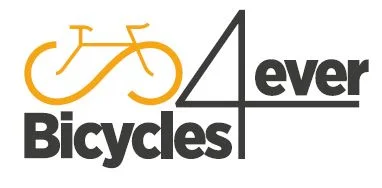Why is the UCI Fighting Time Trial Helmet Innovation? | THEMOVE+ | WEDŪ
Source: WEDŪ Youtube Channel: Why is the UCI Fighting Time Trial Helmet Innovation? | THEMOVE+
Video Why is the UCI Fighting Time Trial Helmet Innovation? | THEMOVE+ with WEDŪ
Video Why is the UCI Fighting Time Trial Helmet Innovation? | THEMOVE+ with WEDŪ YouTube Channel.
WEDŪ Youtube Channel featuring Lance Armstrong, George Hincapie, Johan Bruyneel and Spencer Martin.
Johan Bruyneel and Spencer Martin, in their latest episode of Beyond the Peloton Newsletter, delve into the UCI’s recent decision to ban a crucial element of the Specialized time trial helmet’s aerodynamic design. The decision has sparked controversy within the cycling community, prompting the UCI to reconsider its rules surrounding time trial helmet designs. This move by the UCI has raised questions about sponsor investment and innovation in the future, as well as what the future landscape for aero helmets will look like. Johan and Spencer analyze the reasoning behind the UCI’s decision and speculate on the potential implications for the sport.
Why is the UCI Fighting Time Trial Helmet Innovation? | THEMOVE+
WEDŪ, the talk of the town in the cycling world. It all started when the new time trial helmets were unveiled at the Perry at Perrin and the UCI’s response to them. The specialized headlock, which had been around for two years, was banned, and visma Lisa bikes’ new time trial helmet was put under review, along with the P-temp or the Rudy Project windream helmet, also known as the Darth Vader helmet.
The whole situation left cycling enthusiasts wondering what had caused the UCI to suddenly deem these helmets unsafe after approving them through their safety process. Riders couldn’t just wear any helmet; it had to be reviewed and deemed safe by the UCI. So how did these once-approved helmets suddenly become a cause for concern?
The Tano time trial rolled around, and Janis Ferard introduced what could only be described as an alien head-shaped helmet. While visually shocking, it had passed safety reviews and was specifically designed to provide aerodynamic advantages. The helmets were tailored for specific riders, like Wout Van Aert, with claims of time gains between five and ten seconds per ten kilometers. In a sport where every second counts, these helmets could mean the difference between winning and losing races.
Enter the UCI’s decision to ban the specialized headlock and put other renowned helmets under review. It seemed as though social media chatter and criticism had influenced the UCI’s sudden change of heart. The UCI’s press release detailing the ban and review of helmets raised eyebrows, with many questioning the motives behind the decisions.
The UCI’s move to ban these helmets left many scratching their heads. The sudden change in regulations and the lack of transparency in the decision-making process raised concerns among riders, teams, and helmet manufacturers. The UCI’s handling of the situation drew criticism, with many questioning the organization’s priorities and decision-making process.
The situation highlighted the complex relationship between the UCI, riders, teams, and equipment manufacturers. The UCI’s role in regulating the sport and ensuring safety is crucial, but the recent decisions regarding time trial helmets left many wondering about the organization’s motives and priorities. Riders and teams invest heavily in equipment to gain a competitive edge, and sudden bans or reviews can have significant implications on their performance and results.
The debate around time trial helmets and the UCI’s regulations is ongoing, with many calling for more transparency and accountability in the decision-making process. The UCI’s role in setting guidelines and regulations for equipment in the sport is essential, but the recent actions regarding time trial helmets have raised questions about the organization’s approach and priorities.
In conclusion, WEDŪ sheds light on the complexities and controversies surrounding the UCI’s recent decisions regarding time trial helmets. The evolving landscape of cycling equipment and regulations highlights the need for clear communication, transparency, and collaboration between all stakeholders involved. As the sport continues to evolve, it is essential for the UCI to adapt and ensure that decisions are made in the best interest of the sport, its athletes, and its fans.
The opinions expressed in this space are the sole responsibility of the YouTube Channel WEDŪ and do not necessarily represent the views of CicloNews.

